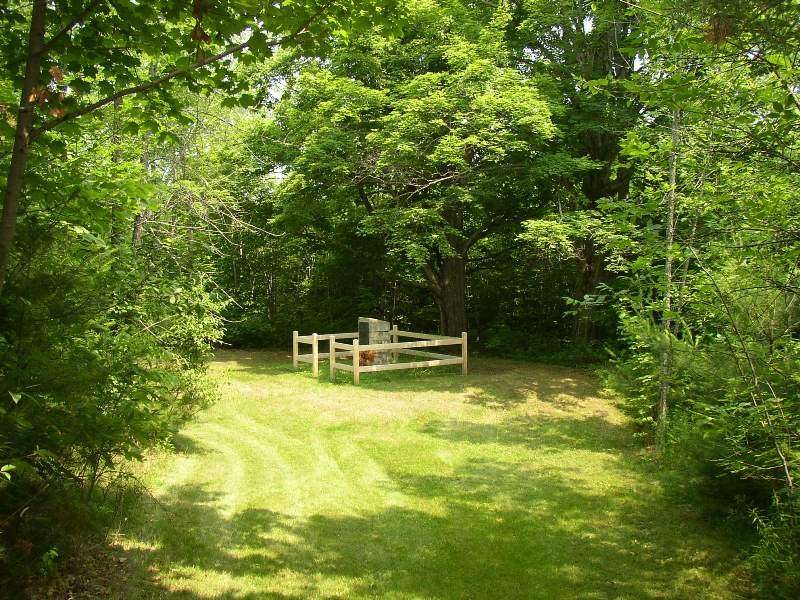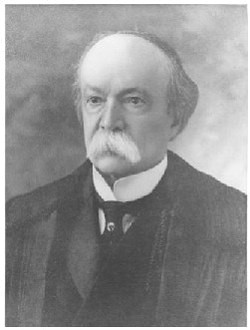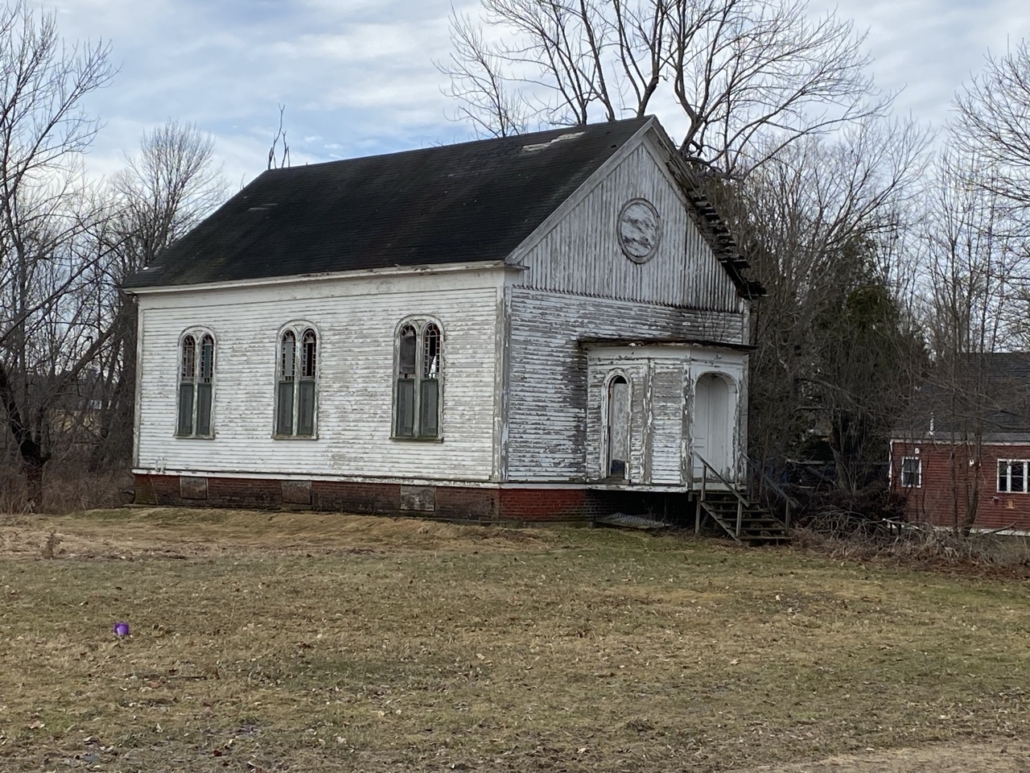Up and down the Kennebec Valley: Albion

Monument erected in Albion for Elijah Parish Lovejoy, an Albion native. On November 7, 1837, Elijah Parish Lovejoy was killed by a pro-slavery mob while defending the site of his anti-slavery newspaper, the St. Louis Observer. His death both deeply affected many individuals who opposed slavery and greatly strengthened the cause of abolition. (photo courtesy of Maine: An Encyclopedia)
by Mary Grow
Of the town and city names your writer has explored in this subseries, none has yet been as frustrating as the Town of Albion.
Sources agree on names and dates. In 1802, Freetown Plantation was incorporated, including most of present-day Albion and the northern end of what is now the separate town of China.
Ruby Crosby Wiggin wrote in her 1964 history of Albion that in March 1803 plantation residents petitioned the Massachusetts legislature to create a town. They received three separate approvals, Wiggin wrote, by the House and Senate plus the Governor, and on March 9, 1804, the Town of Fairfax was incorporated.
On March 10, 1821, the Maine legislature approved changing Fairfax’s name to Lygonia (Lagonia, Ligonia). On Feb. 25, 1824, the name was changed again, to Albion.
So said Wiggin. And Henry Kingsbury in his Kennebec County history. So says Wikipedia. And the on-line Maine an Encyclopedia, which adds that Albion is the old name for England. And a website called FamilySearch. And a website called greenerpasture, quoting Wikipedia. And a website called mainegenealogy.net. And a website called heirloomsreunited, which skips Freetown Plantation, naming only Fairfax, Ligonia and Albion.
Some of these sources describe boundary changes, especially in Fairfax; the early 1800s saw multiple land transfers. Some name inhabitants — early settlers, famous people, heads of household listed in the 1790 and 1820 censuses.
Your writer found not one source that explained any of the four names, and not one that explained why the area had four successive names anyway.
* * * * * *
Freetown was a not uncommon name for an early Maine settlement, presumably expressing the settlers’ belief that they had moved beyond the reach of government. But the men who established Freetown promptly asked to live in an incorporated town, and the 1802 Freetown Plantation became the March 1804 Town of Fairfax.
Wiggin had a theory. She wrote that Freetown’s first town meeting, starting at 10 a.m., on Oct. 30, 1802, was held at John Leonard’s house, which she located on the west side of current Route 202 close to the Unity town line, in the northeastern corner of town.
Leonard and Asa Phillips, who was chosen town meeting moderator, “were neighbors in Winslow [incorporated in 1771] before coming to Freetown Plantation,” Wiggin wrote. She surmised that after “something like five years” in this unincorporated area, they were ready to again “enjoy the same privileges their former neighbors in Winslow were enjoying.”
The Oct. 30, 1802, meeting only chose local officers, Wiggin said. A second plantation meeting, on March 28, 1803, included an article to “petition…the General Court [the Massachusetts legislature] for an incorporation of this plantation just as the [boundary] lines now run.” Wiggin said nothing about a name for the incorporated entity.
She wrote that this area’s settlers mostly came east from the Kennebec Valley or north from Jones Plantation (later China). Neither she nor any other source your writer found gave a date for the first land claim more specific than “before 1790.”
Wiggin and Kingsbury agreed the first settler(s) are not known. Kingsbury added that the “weight of evidence seems to point to the Rev. Daniel Lovejoy” (a Congregational minister who moved to the west shore of Lovejoy Pond before 1790, according to Kingsbury).
Wiggin disagreed. Referencing family papers, she said Daniel Lovejoy was only about 14 years old when his father, Francis, and the rest of the family settled on what was then Fifteen-Mile Pond; Francis, therefore, has a stronger claim to the “first settler” title.
(Francis Lovejoy’s most famous grandson was abolitionist Elijah Parish Lovejoy. Two previous articles in this history series have been about the Lovejoy family, in the Aug. 13, 2020, and Feb. 1, 2024, issues of The Town Line.)
Kingsbury went on to list six families he said were in Albion when the 1790 United States census was taken, naming four (plus Lovejoy): Crosbys, Libbeys, Prays and Shoreys.
Wiggin wrote: “Although the Shoreys, Prays and Libbeys were here very early, we believe that there were others who were here even earlier.”
She said the 1790 census report divided present-day Albion between Hancocktown (another name for Hancock Plantation, mentioned in the June 20 history article as including present-day Benton and Clinton) and Jones Plantation (now China).
Men Wiggin was sure were in Albion by 1790 included Bela or Belial Burrill, Jonah Crosby, Jr., and Robert Crosby, Samuel Davis, Thomas Fowler, Nathan Haywood and Francis Lovejoy.
Kingsbury said Robert Crosby’s homestead was “near the foot of the pond,” and in 1892 part of the land belonged to his grandson, Ora O. Crosby.
Wiggin identified Robert Crosby’s first grant by its 1964 owner, and implied it was at the southwest end of Lovejoy Pond by referring to two dams; an 1811 or 1812 sawmill on a stream; and the “new road completed in 1961” (Route 202?) that runs over the mill site.
(The “new road” also crossed “the spot where the old workshop used to set [sic] at the top of the hill.” Here, Wiggin wrote, the “curved pieces on the arms of the Christian Church pews” were probably made – “at least the patterns for them used to be stored under the workshop bench.”
(The Albion Christian Church, she wrote later in her history, was organized Jan. 1, 1825, at “the home of Brother Robert Crosby.” She listed the nine founding members as Elder Samuel Nutt; Robert and Abigail Crosby; Luther and Ethelinda Crosby; William and Demaris Crosby; and Franklin and Lovina Barton. Luther, Demaris and Lovina were children of Robert and Abigail, she said.)
At least three families who lived in what eventually became the north end of China are included as early Albion settlers: the Burrills, Washburns and Wiggins.
Anecdotes about two of these men illuminate the frequency of the boundary changes mentioned in last week’s account of early days in China.
Wiggin wrote that Nathaniel Wiggin (March 16, 1750 – Sept. 15, 1823) built a log cabin on a hill northeast of the head of China Lake. The 1790 census listed him as a Jones Plantation resident; when Freetown’s first town meeting was held in 1802, he was a resident there. “Thus, he lived in Jones Plantation, Freetown, Fairfax and possibly Lagonia without moving from his home place.”
Japheth Washburn is quoted in the China bicentennial history as writing (in a Jan. 14, 1850, letter) that before the 1818 incorporation of the Town of China, “my Dwellinghouse was in Winslow – across the road, directly opposite, stood my store, in Albion, and 40 rods south, stood my Potash, in Harlem [later China].”
(Washburn was referring to his potash works, where he would have poured water through wood ashes and boiled down the leachate to a solid mass, potash or potassium carbonate. Potash was an essential ingredient in soap, one of many products commonly made at home in 19th-century Maine.)
Kingsbury and Wiggin both named more Albion families who arrived by the early 1800s. Their lists partly duplicate each other. Neither includes a settler named Fairfax.
* * * * * *
Wiggin summarized, without explanation, the March 1821 name change: “the name of the town was changed to Lagonia, or ‘Lygonia,’ (both spellings were used) but some of the residents were still not satisfied and in August of that same year another meeting was called to see if they could get it changed back again to Fairfax, but to no avail.”
Voters at a special meeting in December, 1822, did not pass an article to go back to Fairfax, she wrote. In January, 1823, a five-man committee was elected to draft a petition for the selectmen to present (presumably to the Maine legislature) requesting the name Richmond; apparently nothing happened. On Jan. 8, 1824, voters chose a seven-man committee to petition the legislature for Fairfax, again without success.
Lygonia – the most common spelling – was the name of a British province in southeastern Maine from 1630 or 1639 or 1643 (sources differ) to 1658. It encompassed a roughly square area bounded on the southwest by a line that ran about 50 miles from the coast near Kennebunkport almost to the New Hampshire border; on the northwest by a line that reached the Androscoggin River, enclosing most of Cumberland and part of Androscoggin counties; and on the northeast by a line slanting back to the coast near present-day Brunswick.
The coast was the province’s southeast boundary. Lygonia covered 1,600 square miles, by one estimate, including the present Sebago Lake region and the coastal and riverine areas that were the first parts of Maine to be settled.
Wikipedia, whose writer supplied the 1830 date, says Lygonia was a grant from the Plymouth Council for New England to Sir Ferdinando Gorges. Gorges named it in honor of his mother, Cecily (Lyon) Gorges.
(Gorges [1565, 1567 or 1568 – May 24, 1647] was a Plymouth Company member and recipient of royal grants covering much of what became Maine. Though he was influential in Maine’s early history, his story is outside the limits of this series.)
In 1658, Lygonia became part of the Massachusetts Bay Colony.
Your writer found no connection between this Lygonia and the inland Lygonia that succeeded Fairfax.
* * * * * *
Citing town records, Wiggin wrote that at an April 5, 1824, meeting, Lagonia voters were asked to accept the name Albion for their town, and agreed. Again, she gave no explanation for the action or the name.
As previously mentioned, Albion is an old name for Britain. Wikipedia offers a scholarly article on the origin of the word (from early Celtic, via ancient Greek), referring to sources from the sixth century B.C. into the Christian era.
“By the 1st century AD, the name refers unequivocally to Great Britain,” the Wikipedia writer says. However, it was soon replaced by words that led to the Roman word “Britannia” and related names.
An on-line Encyclopedia Britannica article says “Albion” is the earliest name for “the island of Britain,” as distinct from Ireland and other islands that make up the British Isles. “The name Albion has been translated as ‘white land’; and the Romans explained it as referring to the chalk cliffs at Dover (Latin albus, ‘white’),” the article continues.
More recently, the Wikipedia writer says, English explorer Sir Francis Drake christened California “Albion” when he visited there in 1579, during his voyage around the world. When the provinces of Québec, Nova Scotia and New Brunswick were united as the Canadian Confederation in 1867, alternative names “briefly suggested” for what became Canada were “New Albion” and “Albionoria” (translated as “Albion of the North”).
Your writer cannot connect any of this information with people in Lygonia, Maine, choosing a new town name early in 1824.
Historian Ruby Crosby (Bickmore) Wiggin
Historian Wiggin’s full name is Ruby Crosby (Bickmore) Wiggin. An on-line genealogy (managed by Roger Keith Crosby, who last updated it two years ago) says she was born in Albion on Dec. 5, 1908, daughter of Merlon Linley and Pearl Eleanor Bickmore.
Pearl Bickmore was born in Calais in 1887, to parents whose first names are not recorded in the on-line genealogy, and was adopted by Ora Otis and Hannah Buzzell Crosby.
Ruby married Raymond Kenneth Wiggin (Jan. 29, 1907 – Nov. 2, 1998). Raymond Kenneth Wiggin was the son of Elmer Ellsworth Wiggin (1868 – 1953); who was the son of George Martin Wiggin (1835 – 1905); who was the son of Ezra Wiggin (1803 – 1894); who was the son of Nathaniel Wiggin, Jr. (1777 -1860); who was the son of Nathaniel Wiggin (born March 16, 1750, in New Hampshire; died Sept. 15, 1823, in China).
Ruby Crosby Wiggin died in Clinton, June 8, 1996.
Main sources
Kingsbury, Henry D., ed., Illustrated History of Kennebec County Maine 1625-1892 (1892).
Wiggin, Ruby Crosby, Albion on the Narrow Gauge (1964).
Websites, miscellaneous.
Responsible journalism is hard work!
It is also expensive!
If you enjoy reading The Town Line and the good news we bring you each week, would you consider a donation to help us continue the work we’re doing?
The Town Line is a 501(c)(3) nonprofit private foundation, and all donations are tax deductible under the Internal Revenue Service code.
To help, please visit our online donation page or mail a check payable to The Town Line, PO Box 89, South China, ME 04358. Your contribution is appreciated!






Leave a Reply
Want to join the discussion?Feel free to contribute!